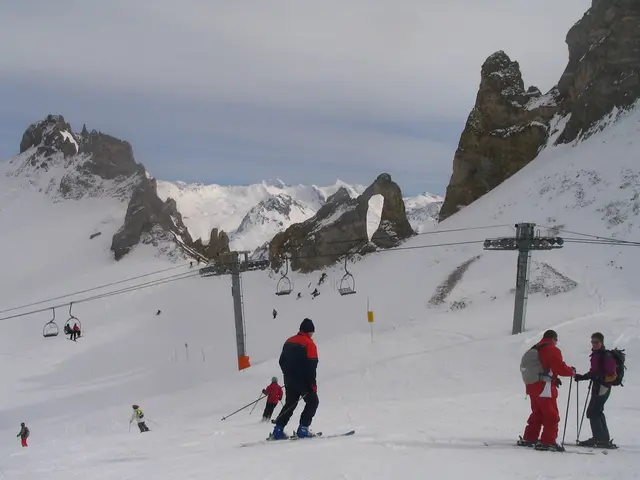Trouble on the Road - Milk Driver Stuck, Injured in Slush Accident
In a chilling turn of events near Maselheim, Biberach district, a milk truck driver found himself in a precarious situation. The unfortunate incident happened early Tuesday morning; the 47-year-old driver, aiming to climb an ascending road, was thwarted by treacherous snow conditions. His efforts to ascend the slippery slope, along with a neighboring farmer's aid using a tractor, proved futile. After attempting to push the uncoupled trailer up the incline, the trailer skidded, turned, and pinned the driver against a wall.
Luckily, the driver managed to free himself, but not before sustaining serious injuries. Emergency services were alerted, and he was swiftly transported to the hospital.
Weather-Related Challenges
Inclement weather played a significant role in this unfortunate incident. The slippery snow made it challenging for the milk truck to gain traction, especially on the incline. Likewise, the nearby farmer's efforts to tug the trailer up using a tractor were hindered by the slick conditions.
Slippery roads, long stopping distances, and the danger of jackknifing are common hazards associated with icy roads, posing significant challenge for milk truck drivers. Further, the combination of these factors can lead to driver distraction, potentially leading to more serious incidents.
Equipment Failure is an Additional Concern
The extreme cold and wet conditions can contribute to equipment failure, such as faulty brakes or tires, further increasing the risk of accidents for milk trucks on icy roads.
Additional Insights
Slippery Roads and Reduced Traction
Icy roads reduce the traction between the tires and the road surface, making it more challenging for trucks to stop or maintain control. The increased risk of skidding or loss of control can lead to accidents.
Longer Stopping Distances
The stopping distance for vehicles on icy roads is significantly longer than on dry roads. This increased stopping time can lead to rear-end collisions or other accidents if the driver fails to adjust their braking accordingly.
Jackknifing
Large trucks like milk trucks are more susceptible to jackknifing on icy roads. Jackknifing occurs when the trailer swings out to one side, potentially causing a loss of control and leading to accidents.
Slippery Surfaces
Icy surfaces can cause milk trucks to slide or lose traction, especially when turning or braking. This loss of control can result in accidents, including collisions with other vehicles or roadside obstacles.
Driver Distraction
In addition to the physical challenges posed by icy roads, drivers may also be distracted by the hazardous conditions, leading to a higher risk of accidents. Drivers may need to focus more on navigating the road safely, which can divert their attention away from other critical aspects of driving.
Equipment Failure
The extreme cold and wet conditions can also lead to equipment failure, such as faulty brakes or tires, which can further increase the risk of accidents.
Sources:
[1] "How weather conditions affect commercial vehicles"
[2] "Winter driving hazards and how to mitigate them"
[3] "Winter driving tips for truck drivers"
[4] "Equipment failure and its impact on fleet operations"








